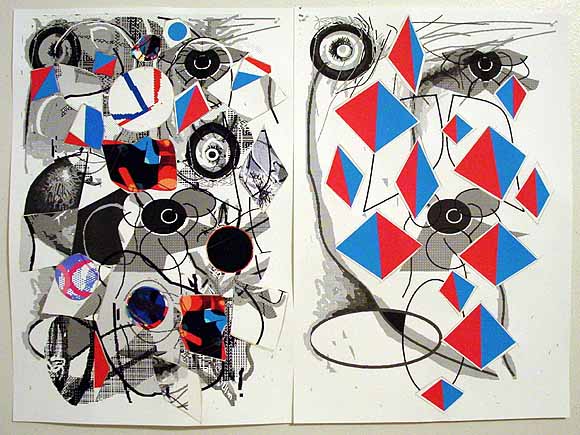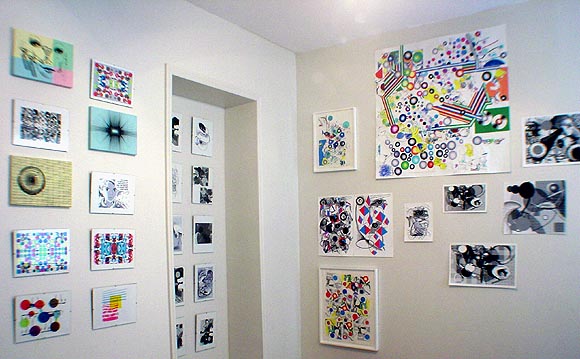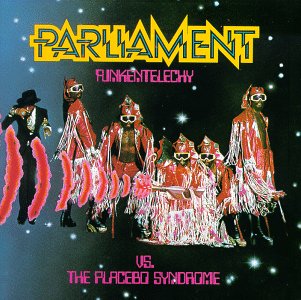View current page
...more recent posts
Last night's debate goes to Edwards for staying on message and all-round joi de vivre, even though his message on Iraq is some scary BS. Cheney looked haggard, and by not responding to the frequent charges of corruption, incompetence, and lying it looked like he didn't care, either out of arrogance or just weariness. In the debates so far, both Edwards and Kerry have been like the savior one rarely gets who steps in to tell an alcoholic parent, spouse, or boss that "no, in fact you're wrong, and you can't just give people that evil look and get your way." A real drink of clean water after almost four years of arsenic-tinged sludge.
an interview with jenghizkhan
[This interview has its own page here. I'm posting it in full on the blog, as well. --TM]
I first heard the music of jenghizkhan (aka John Parker) at the Brooklyn space vertexList, and described it enthusiastically here as "mysterious, sexily-filtered ambient industrial keyboards."* Later I heard him perform with Man from Planet Risk, his duo with Cave Precise (Ron Ramey), both in a live club setting and on CD. In a post on the band I commented on the differences between their live and studio sounds:
For all its echo-y horror soundtrack atmospherics and Black Sab-like bass riffs, the CD is much lighter [than the live playing]: the beats are spryer, with turntable twists & jazzy piano riffs livening up the doom and gloom. "Triphop" comes to mind because the sound is truly trippy: jenghizkhan approaches music like a painter (and is in fact a visual artist, exhibiting under his non-nom de plume), taking advantage of all the filtering and timestretching capabilities of modern keyboard tech to make layers of artfully mangled sound. Imagine Ennio Morricone eclectism shot through with the kind of dreamy, smeared psychedelia of San Francisco post-punkers Chrome, or the European hardcore tech of The Mover set to a hiphop beat.
Since then, I've listened to jenghizkhan's solo CDs Hooden Knooks and Brooklyn Sucks. It's great stuff, what the late lamented Throb records would file under "braindance" and what I would call "art electro." By way of comparison, I went back and gave another spin to the Ischemic Folks compilation, which many considered a watershed for this kind of intensely digital electronic music, and have to say I prefer jenghizkhan's improvisational style with the laptop. Except for a couple of lush Richard Devine compositions, the IF CD is brittle and analytical, with too much of the Miami Bass parent DNA decanted out in the name of art.
Mixed in with jenghizkhan's trademark doomcore riffs one hears a lot of humor, and a strong melodic sense even when he's furthest out there in the drill-and-bass, sound-bending zone. As audio abstraction it's more frenetic de Kooning than faux-febrile Richter, and for all his insistence on "modern digital synthesis" over retro styles and sampling (see below), his compositions have the verve and warm texture of early analog and tape recorder music (e.g., Mario Davidovsky, Otto Luening, Richard Maxfield), as opposed to the rather cool "glitch" sound of Oval, Phoenicia, et al. Check out these tracks from the CDs: "Sidewinder Circus" [spotify], where the digitally scrambled phrase "sidewinder heat-seeking missile" sniggles in and out of overdriven-soundcard-like raunch, and "Outlet Nightjar" [ 3.56 MB .mp3], in which a synthetic bowed string keeps sounding the same ridiculous note in counterpoint to a heavily reverbed pseudo-guitar.
The following interview was cobbled together from emails I exchanged with jenghizkhan after we visited each other's studios. We're both visual artists involved with music (although his creative audio output far exceeds mine) and some running themes of our (still ongoing) discussion are sampling vs synthesis, painting vs musicmaking, and why the digital production of music so far has outstripped digital imaging as a creative medium. Mostly though, we talked about the really important stuff: gear!
Tom: Let's talk about Man from Planet Risk. As I mentioned, the live sound differs quite a bit from the studio recording: the beatbox-style beats on the CD sound very hiphop but with Cave drumming live the music has more of a heavy metal feel. You told me that the two of you have rather different philosophies; that Cave likes live playing and working with samples of live playing, while you favor synthesis and software laptoppery. What directions are you two coming from? What are your influences?
jenghizkhan: Actually the CD is composed of real time playing that is sometimes looped; both of us play in real time. You may be able to hear it in our CD in that it is not so perfect or too mechanical.
As for influences, I would say that Cave has been schooled in hip hop but is fascinated by classic metal. He tends to stay in the middle of the road when it comes to his likes but with a very deep understanding of how music is crafted.
I don't have enough perspective on myself to make a similar sweeping appraisal, but if I had to throw some influences out there, they would be: old Tricky, old Cure, experimental Scanner stuff, and Kurt Cobain songwriting. Although I named mostly mainstream influences, I tend towards unusual stuff liking parts of songs rather than a particular artist.
We meet somewhere between those two tendencies. We are very facile at making music and try to keep it from turning out cliche. The last track on our E.P. [.mp3] was a deliberate attempt to not lose some hiphop fans and is probably the most mainstream track and not a future direction. The first track [.mp3] represents how we work now, and it is not that popular.
T: When I came to your studio you walked me through some of the programs you use; thanks for that, it actually helps when I'm listening. I'm impressed by the full, rich sounds you're getting from the laptop. And you have a great ear for psychedelic "texture." I do hear some Morricone influence--not that it's derivative. Do you listen to him at all?
j: I did listen to Morricone in the mid-80's, among other things. I also studied Classical music for a semester at Princeton. Besides learning the piano when I was young (which I can no longer play) that may be the training that is emerging through the mix.
T: Did you ever get the SidStation synth we talked about?
j: I did--I like it but will probably sell it in a few months. Do you want it? It's expensive but will only increase its value since it was such a short run and the original Commodore SID chips are hard to come by. [The SID6581, a chip combining digital and analogue technology, was a part of the Commodore 64 computer, an '80s-vintage machine much loved by hackers; according to the manufacturer, its programming is "based on over 10 years of experience from the C64 hacker community." --TM] I thought you might be interested since it is so low-fi digital. Whole songs can be written on it.
T: Short answer--yes! What did you not like about it?
j: I like it OK but the Monomachine has a SID emulator that I like just as much. Also, this machine really needs to be with someone that loves it. It definitely has that 80's video game appeal. What's supposed to make this better than other SID machines is the programming that went into it. I don't really know that much about the programming but can tell from their later machines that it must be brilliant. There were a little over 1000 SidStations made.
I had the same issue with my Virus which I sold to Cave. He loves it; I just know it as one of the best synths ever made. The other factor is that I have come to a conclusion concerning my focus with sound. I really like modern digital synthesis. I want to explore the possibility for new sound with the Monomachine and Native Instruments' REAKTOR software. I'm selling the rest.
T: I figured it might be because of the retro thing. That concerns me too. I'd like to try to make something with it that sounds good but doesn't immediately scream video game or 80s. That may be impossible, but I like the aesthetics of the machine based on what I saw and heard on the website.
It's funny, what you're saying about using the most current digital tools resonates for me when I think about music (mainly as a listener), but I don't feel that sense of purposeful excitement with the tools on the visual side. Maybe I'm just not seeing someone really screwing with state of the art software so it doesn't look so much like...state of the art software. I admired the Jeremy Bernstein video that came before you at vertexList that night but I didn't love it. I could see it was cutting edge animation but felt no urge to go there myself.
j: I agree about the prevalent visual digital conservatism. It seems as if everyone is using visual digital tools for convenience (meaning everyone is doing the same old thing but more facilely). In fact, I am left admiring hackers for anything non-aural. Interestingly, the designers of the SidStation were hackers.
The stuff I find in sound is ugly and dumb. I think perhaps that might be a clue as to what to do visually. That's why I like the stuff you are on to.
The SidStation definitely can make some great sounds if you are exploring the way in which you seem to be interested. I'm not going to get that deep into it. I do want to check out the modulation sequencer -- I'll probably do that in a couple weeks. It is not retro; it just uses an under-appreciated sound generator.
You will probably want to control it via your computer. In fact (+ perfectly) you will be able to use that program that you showed me [Harmony Assistant --TM.] to write notes that play the SidStation. You should check out if your program sends midi.
T: It does--I just have to get it set up (uggh). Speaking of which, and changing the subject to your solo CDs, isn't that the SidStation on "Jenghiz, the Damager"? It's very catchy [spotify]. There's a lot of humor in the music, even when it's dark and doom-y. "Outlet Nightjar" also cracks me up.
j: I actually used my circuit bent Casio SK-1 on "J, the Damager" but you are right it is practically the same thing. The SidStation has more sound options and control but you have to write the music. The Casio just spits out stuff. (In fact it may be catchy because the Casio plays "bent" versions of original presets. You may have heard something vaguely familiar 20 years ago.)
T: There was some other software you showed me in your studio, besides REAKTOR, to make your music. Do you remember what it was?
j: I'm not sure which programs I showed you. REAKTOR is a fully modular software program that does analogue modeling and digital synthesis as well as having a wide range of sequencer capabilities. It's similar to MAX-MSP, which is even more flexible and has more possibilities. I like REAKTOR because it has an online library with contributions from REAKTOR users all over the world and because it tries to emulate synthesizers of the past. Then I just start rearranging the virtual wires until it is screwed up and sounds new to me. I like working in the direction of making something "wrong" rather than the one of making something "right."
I do the same thing with the Monomachine (and, on the Brooklyn Sucks CD, the Korg Electribe ES-1 and EA-1). The circuit bent Casio SK-1 is already wacko. I started making music by scratching CD's that I made from digital noise samples (similar to modem tones). I got the samples from saving the screwed up files that my computer sequencer would spew out when it crashed (which was all the time in the beginning). Ironically all this happened in my attempt to make "real" music. One scratched riff is the main melody in "Killing the Messenger," the first song on the Man From Planet Risk CD.
Other programs are Emagic Logic and Ableton Live, which I use in a traditional studio way to put my ideas together.
T: I'm pretty sure the two programs you showed me were Logic and REAKTOR. I like what you're saying about "rearranging the virtual wires" in REAKTOR. When you say "The circuit bent Casio SK-1 is already wacko," is "circuit bent" your term? By wacko, do you mean you did something to it that can't be reversed? Are you talking about MIDI controlling a physical Casio or a playing a virtual Casio within REAKTOR? Also, just for clarification, you said "I started making music by scratching CD's that I made from digital noise samples (similar to modem tones)." Do you mean physically scratching, as in damaging, the CD, or scratching as in "Do You Like Scr-Scr-Scr-Scratchin'"?
j: In general, I am not a fan of midi. A lot of new electronic music is made that highlights the capacity of midi. I just use it to do very basic communication between machines like notes and time clock. As with the Man From Planet Risk CD, all my CD's are composed of real time playing (sometimes looped).
For the Korg I loaded in digital sounds that I then made into kick drum like sounds, etc. or left them raw. I played it like an instrument, recorded some phrases and then looped them in Logic. At the time I was timid so I often took a wild sound and tamed it into a more familiar one. My new work will be left untamed.
Circuit bent is a relatively new term to describe instruments that have had their internal wires re-arranged from their original purpose in order to maximize their sound-making capabilities and experimental possibilities. (Sort of a real world version of REAKTOR). I played the SK-1 as an instrument and then recorded it and looped it in Logic. In fact, "Jenghiz the Damager" is pretty much one live take with one part edited out. I practiced it 20 or so times and then recorded it. The problem, or genius, with circuit bent machines is that they rarely do the same thing twice. Here is the link to the builder, Arius Blaze. I think you may find this and his links very interesting. He belongs to a very passionate music culture. They convened in New York this summer for the very first time to exchange ideas.
And I mean Scr-Scr-Scr-Scratchin but sometimes at a super subtle and slow rate so that I can draw out all the tones that make up the white noise of digital streaming information.
I don't use Logic in a very experimental way. I do use it to do some granular resynthesis with Pluggo plug-ins (made in MAX-MSP). Otherwise, I just throw loops into it, make arrangements, mix and master. I may have shown you Ableton Live which I will use in the future because it provides more possibilities to play with arrangements.
T: This whole business of moving sound around among instruments and software makes locating the "real" source of the music pretty daunting, conceptually, though I don't know why I should still find that important. With a guitar, say, you always intuitively know what's making the sound and where it's coming from. Also, I have a hard time keeping straight what are inherently analog or inherently digital properties.
I did know about the circuit bending, homemade instruments phenomenon, just not by that term. Peter B, Paul Slocum, Nautical Almanac are three artists that come to mind--a couple were in that Bent festival (which I unfortunately missed).
j: All my instruments are like playing the guitar including REAKTOR on the computer. My schtick is playing the computer like an instrument. Then I use Logic to put all the recorded sounds of various instruments together and make songs. Sometimes I add additional virtual instruments within the program.
Midi is just a language for machines to talk to each other. Midi makes no sound. That is often the source of confusion. I do not explore the possibilities of midi. I find it dehumanizing even though it is very popular these days: all those rapid changes, extreme effects, movements that a hand strumming strings on a guitar could never make.
I joke with Cave that the guitar is a dumb instrument. What makes the guitar interesting is how much you can get out of its limitations. I enjoy the wider range of possibility that synthesis involves.
Analog has to do with electric currents and voltages. Digital has to do with 1's and 0's (i.e. granular resynthesis is chopping a sound into tiny bits and moving them around at different speeds.) It's difficult to make digital synthesis sound alive like electric currents although I like the challenge.
In your situation you can use your computer as both a tone generator (the inherent digital sounds that it possesses) and a sequencer that plays both the sounds in the computer and the sounds in the SidStation via midi. You would work the same way as you have but just have the added richness of a professional tone generator that has buttons and dials.
T: I want to come back to the issue of sampling vs synthesis, which we were discussing in connection with Man From Planet Risk. You sent out an email recently for a gig and made a kind of "no samples" guarantee. What's up with that?
j: In my email I said something along the lines of, "I'll be performing live digital synthesis -- that means no wimpy samples!"
This is actually a reference to a way of playing live rather than a general argument for synthesis vs. sampling. I often find live electronic acts tedious because they basically play a tape of what they've created in the studio. Hiphop has been a culprit of this whereby the music is played from a DAT tape with a DJ adding some vinyl scratching or flourishes over the top of the mix. The main live element ends up being the rapper, and I personally have always preferred music to lyrics. Hiphop has come to grips with this limitation. Now hiphop acts (like Outkast) have live players that actually play the drums, guitar, bass, and keyboard or send out samples on the fly from a machine or vinyl. I find the tension of the players on stage having to pull off a song together much more interesting than a guy doing Karaoke to tape.
There is a difference between live DJ-ing and live synthesis. A live DJ makes choices from already complete excerpts of music that can stand on their own. A DJ's creative input is in his or her choice. With live synthesis you begin with a blank slate excerpt for some parameter settings or a saved phrase of notes. You never know where your journey of knob twiddling will lead you -- good or bad.
Recently the lines between synthesis and sampling have blurred because sample libraries have become so vast that they include every minute detail of any instrument. So every possible sound of a synthesizer can be sampled. Hence they are the same, in theory. However, there is a crucial difference:
The difference can be described by a painting term--"plasticity." A sample can only be pulled and prodded to a certain degree. Eventually when it has been modified by effects it will sound just like anything that has a heavy dose of that effect. You can no longer hear the original sample. Synthesis is much more "plastic." You are working at a more essential level either manipulating electric currents or their mathematical equivalents. There are so many more possibilities and so many more directions in which to go. This can lead to some really bad results which is actually hard to do with sampling (and perhaps why it is more popular). (De Kooning once said when visiting a colleague's studio that he had no bad work around. That was how he knew that he was not making anything interesting). I prefer the possibility of synthesis over the control of sampling.
Cave and I do not exclusively sample or synthesize. Both are essential parts of making electronic music. At some point in most cases I have to sample any synthesized phrase that I make so I can arrange it to make a song. The only difference between the way we work is Cave often samples a phrase from old material that he believes has been overlooked or would sound interesting in a new context. I usually make my samples from scratch. The tension between the two is why I believe we are on to something really interesting in Man From Planet Risk.
*FOOTNOTE: He has since posted those performances on Soundcloud, captioned "live digital synthesis with the Elektron Monomachine." The track "4scratch" is one of my favorites, and I did a remix, consisting solely of lopping off the intro and cutting straight to the monster, four-note hook that first grabbed my attention: [4.7 MB .mp3].
equipment list:
jenghizkhan (current solo and Man From Planet Risk): G4 laptop; sequencer: Emagic Logic and Ableton Live; softsynths: REAKTOR, Crystal; effects: Pluggo and Ohmforce plugins; Elektron Monomachine, Machinedrum, and SidStation; Circuit Bent Casio SK-1 by Arius Blaze; Elektrix, Akai, Mutronic's Mutator and Sherman Filters; Zvex Machine Distortion Pedal; Red Sound XS-FX effect processor; Dave Smith Evolver and Roger Linn Adrenalinn; Clavia Nord Modular
Cave Precise's equipment for MFPR: E-mu SP 1200, Ensoniq ASR-10, Live Drums, Live Bass, Roland Juno 106, Novation Superbasstation, Access Virus C, ProTools LE, Akai MPC2000XL

"Synthetic Synthetic Cubism"? Yeah, it's a misnomer--Synthetic Cubism was essentially late, illustrational Cubism but this current work I'm doing has more in common with the early, incomprehensible Analytical phase. The director of a nonprofit gallery that only shows overtly political work visited the studio a couple of years ago and dismissed pieces of this ilk as "just Kandinsky" (also not a Synthetic Cubist, but close enough). I take that as a compliment, since last I heard Mr. K. worked with paint (with all its history and baggage) and these are entirely done with a computer, printer, scissors, and tape. Masquerading as somewhat stylish drawings and paintings, they are simulacra--"robot Kandinsky." Unlike Mike Bidlo and the appropriators, though, I'm not making facsimiles of known early Modernist works. I'm actually still interested in the puzzles of representing a "vortex" or "field." How much does that "pure" field reflect the stamp of the imaging program? Can that programming be circumvented or thwarted? What is inherently "cyber" and what belongs to the pre-technological past? Those are some of the issues here.

Very funny/creepy montage here (Quicktime movie), consisting of fast clips of the fear buzzwords used over and over by Republican National Convention speakers. See McCain, Bush, Cheney, Pataki, et al saying "September 11," "Global Terror," "Saddam Hussein," "Weapons of Mass Destruction," etc. without the intermediate filler of their speeches, until you're ready to scream. The rhythms of the editing of the clips are very cleverly done. I missed the convention on TV, so it was good to get it in capsule form like this. Biggest ass of the lot: Rudolph Giuliani. (I expect this'll be all over the Net soon, if it isn't already.)
Debate 1 Recap: Kerry beat Bush on facts. But Bush, being a religious fanatic, stays on message, even though he f-ed up in Iraq. Kerry has no good answer to Bush's oft repeated criticism: How can you say "wrong place, wrong time, wrong war" (that is, make a devastating and accurate critique of prewar machinations) and expect to win the war? How does that inspire the troops? Kerry says he'll "win" by (1) going to the UN, (2) getting more allies involved, (3) strengthening Iraq's borders, (4) giving our troops body armor, (5) "chang[ing] the dynamics of the ground" (i.e., flattening Fallujah), while all the while criticizing the Administration's plan to build 14 military bases in Iraq. That is indeed a contradictory mix of signals. And would France or Germany really commit troops at this point? No. Will Arab nations? Get real. Bush plans to pour it on and kill more people without help; Kerry plans to bring in allies to help us do it, which will never happen. Kerry wants us to stay in Iraq for the usual bleeding heart "humanitarian" reasons (killing rebels for peace); Bush wants to do it to show Americans are tough (and for the oil). Yet I think Democrat and Republican voters alike are secretly banking that both are lying and will do a quick pull-out after the election. Both positions are phony, but Bush is at least internally consistently phony.
UPDATE: From the lead paragraph in the NY Times coverage today: "And it was body language as much as rhetoric and one-liners that distinguished the two candidates in last night's debate. " There they go again, focusing on the cosmetic stuff, avoiding discussion of the issues. "We'll get allies involved." Rii--i-ight.
entelechy
Function: noun
Inflected Form(s): plural -chies
Etymology: Late Latin entelechia, from Greek entelecheia
1 : the actualization of form-giving cause as contrasted with potential existence
2 : a hypothetical agency not demonstrable by scientific methods that in some vitalist doctrines is considered an inherent regulating and directing force in the development and functioning of an organism
funkentelechy

Debate questions from today's New York Times op-ed page, annotated.
WHAT TO ASK JOHN KERRY (note the Times puts the conservative questions first)Better questions, please?
WILLIAM KRISTOL: If you now consider the war in Iraq to have been a mistake, how could you, as president, "ask a man to be the last man to die for a mistake"? (Translation: Kristol wants men to die.)
RUTH WEDGWOOD: How could we have guarded against Saddam Hussein's reckless nuclear intentions? (Assumes Saddam was a threat, recently disproven.)
VICTOR DAVIS HANSON: What precise plans do you have to induce positive changes in attitude in Iran, Lebanon and Syria? (Assumes we're the "world's cop.")
WHAT TO ASK GEORGE BUSH
MADELEINE K. ALBRIGHT: Since our direction in Iraq is obviously wrong, don't we at least need to change drivers? (Editorial masquerading as a question.)
RICHARD A. CLARKE: Under what circumstances would you authorize military action, including an invasion, to achieve regime change in Iran? (Assumes we're the world's cop.)
ARTHUR M. SCHLESINGER Jr.: What is the relation between your Christianity and that preached by the pope and by mainstream Protestants who oppose preventive war? (Philosophical question no one in the public expects a politician to answer.)
I came across Wooster Collective: A Celebration of Street Art during my reBlogging stint, and continue to be amazed by the work on the site. A visual feast, inherently post-studio, and an insult to God-given property rights. Here's Isaac "A-Number One" Hayes on a fence in Germany:

And a couple of architecture-on-architecture renderings from Paris that are merveilleux:


